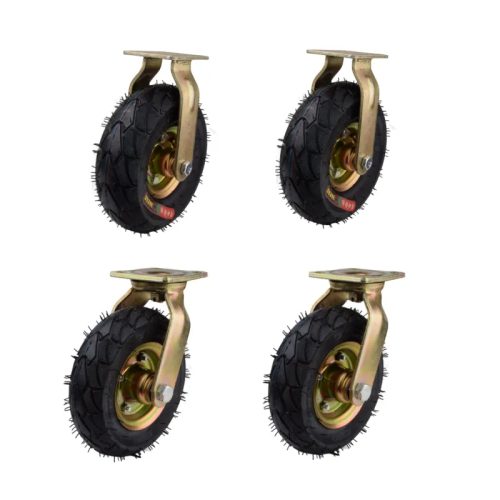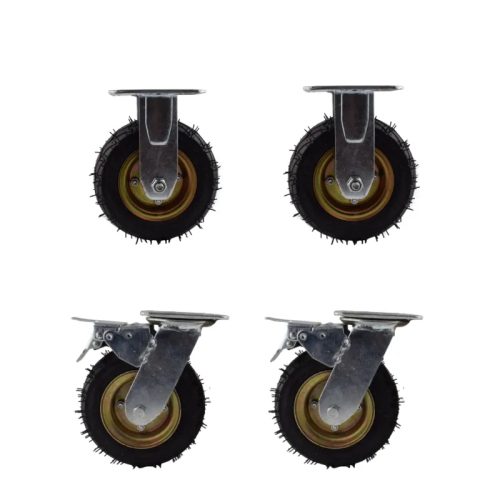Pneumatic casters are essential components in many material handling applications, offering a smooth and shock-absorbing solution. To maximize their lifespan and ensure their continued performance, regular maintenance and care are crucial. In this article, we’ll provide you with a comprehensive guide on how to maintain and care for your pneumatic casters.
1. Regular Inspection
Scheduled inspections are key to identifying potential issues before they become major problems. Routinely check your pneumatic casters for any signs of damage, such as cracks or cuts in the tires, loose bolts, or misaligned components. Address any issues promptly to prevent further damage and ensure safety.
2. Cleaning and Lubrication
Dirt, debris, and contaminants can accumulate on pneumatic caster wheels and bearings, affecting their performance. Regularly clean the casters to remove these particles. Lubricate the bearings to reduce friction and ensure smooth rolling. Be sure to use a lubricant recommended by the caster manufacturer for optimal results.
3. Proper Inflation
Maintaining the correct tire pressure is crucial for pneumatic casters. Underinflated tires can lead to excessive wear and decreased shock absorption, while overinflation can result in a rougher ride and reduced load-bearing capacity. Refer to the caster’s specifications to determine the recommended tire pressure and check it regularly.
4. Load Management
Avoid overloading your material handling equipment beyond the caster’s load capacity. Excessive weight can cause premature caster failure and reduce the overall lifespan of the casters. Always adhere to the manufacturer’s load capacity guidelines to ensure longevity.
5. Storage Conditions
When not in use, store your material handling equipment in a clean and dry environment. Prolonged exposure to moisture or extreme temperatures can lead to corrosion and damage. If possible, store the equipment indoors or cover it with protective materials.
6. Replace Worn or Damaged Parts
If you notice significant wear or damage on any component of your pneumatic casters, replace them promptly. This includes the tires, bearings, or any mounting hardware. Continuing to use damaged parts can lead to further issues and safety concerns.
7. Monitor for Tread Wear
Pneumatic caster tires can wear down over time. Keep an eye on the tread wear to ensure that they maintain their shock-absorbing capabilities. When the tread becomes significantly worn, consider replacing the tires or the entire caster.
8. Avoid Abrasive Surfaces
Wherever possible, avoid rolling your material handling equipment over abrasive surfaces like rough concrete or sharp debris. These surfaces can accelerate tire wear and damage the casters. Choose the appropriate path and use protective measures if necessary.
9. Maintain Balance
Ensure that your equipment with pneumatic casters is balanced when carrying loads. Imbalanced weight distribution can cause uneven wear on the casters and reduce their effectiveness.
By following these maintenance and care tips for your pneumatic casters, you can extend their lifespan and optimize their performance. Regular inspections, proper cleaning, and adherence to load limits are essential practices that will help you get the most out of your pneumatic casters, ultimately saving you time and money in the long run.


